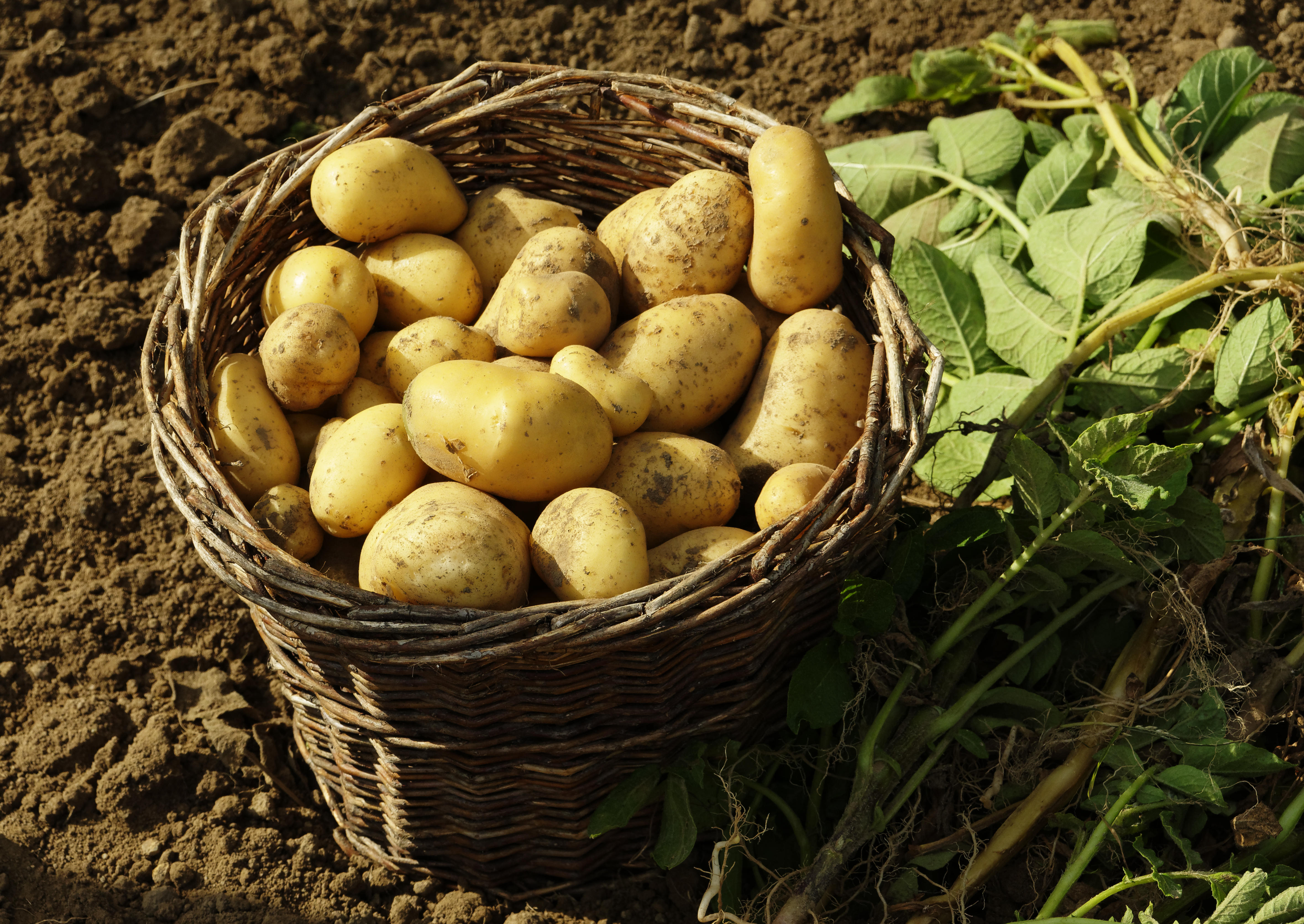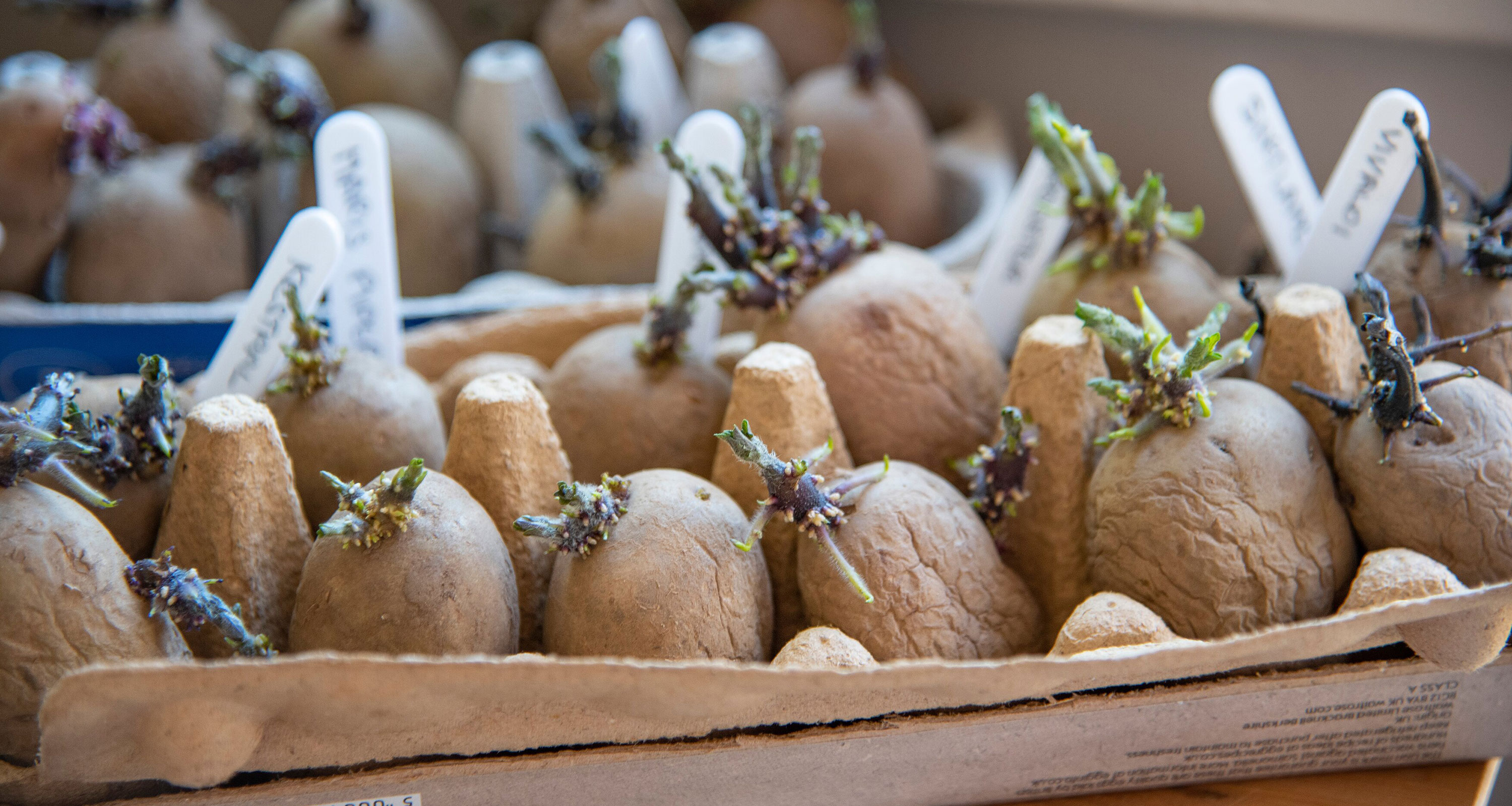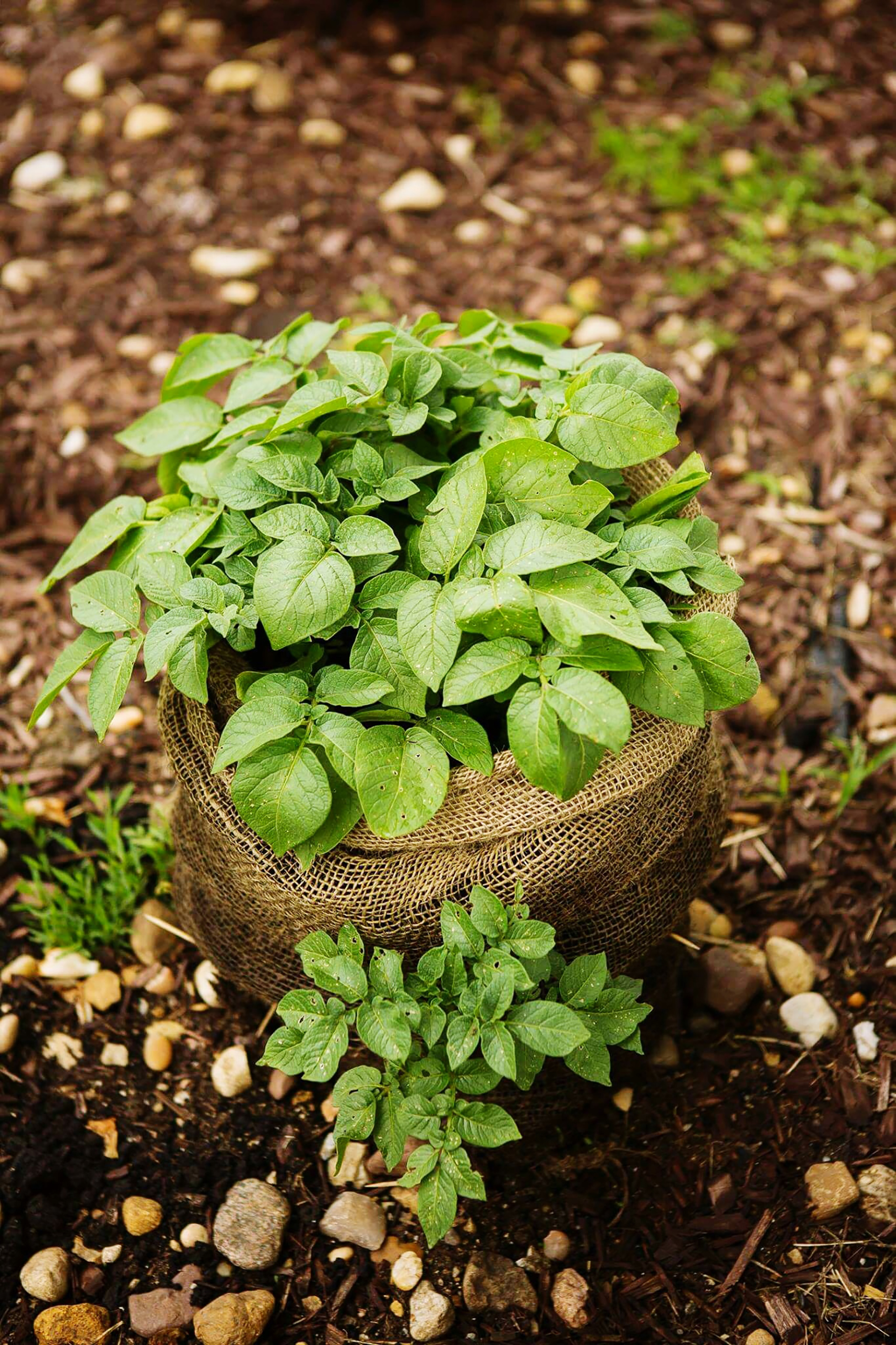How to grow potatoes – fail-safe steps for brilliant results
Grow your own potatoes and you can harvest for everything from fries to frittatas


Learning how to grow potatoes is one of the easiest kitchen gardening skills you can acquire. Potatoes make a great, staple crop in even small yards, and they need very little care.
They look great in vegetable patches and borders and, better still, once harvested, they can be transformed into a myriad of delectable dishes.
There is a huge variety of potatoes to choose from, for Sunday roasts and salads alike.
This simple guide will help you to grow potatoes effortlessly as part of your vegetable garden.
How to grow potatoes
Whether you choose to grow potatoes in a bag, a pot, in borders or in a dedicated kitchen garden, here is all you need to know.
1. Choose your potato variety

The type of potato you choose to grow will not only affect when you need to plant it, but also how long it will take to grow. It is best to always purchase seed potatoes from the garden center to grow.
‘Don’t be tempted to use the spidery ones from the back of your kitchen cupboard as these won’t produce a reliable crop,’ warns Kate Turner, Gardening Guru at Miracle-Gro.
2. Chit your potatoes

‘Chitting is a method of preparing tubers for planting which breaks their dormancy artificially and initiates growth,’ explains Francesco Ponziani, Horticulturist at RHS Garden Harlow Carr. ‘Reducing the time in which potatoes are ready to harvest.’
Chit your potatoes by placing them in an egg box or tray. Position them in a cool light place, ideally a windowsill without any direct sunlight. Leave them for about six weeks, until they begin to produce shoots.
Francesco recommends allowing only four to five of the sturdiest shoots to grow. When these shoots are around 2.5 cm they are ready to plant out.
3. Find the right spot, prep the soil
Potatoes grow in most soil conditions, as long as it is not too soggy or compact. However, the richer the soil the better the crop, so it is a good idea to prepare the soil by incorporating a good quality compost into it.
Choose somewhere that is sunny and frost-free. ‘Try to avoid growing them in soil where potatoes have grown for two years previously in succession, otherwise this will increase the risk of disease,’ adds Francesco.
4. Plant the potatoes
The traditional planting method is to dig a trench and plant the potatoes 4 to 5in deep and between 12 and 15in apart depending on the variety you are planting, with the shoots pointing upwards. Add compost so that the potatoes are covered. Keep the compost well-watered in dry weather until the tubers start to form.
You can grow potatoes in a container if you choose small varieties. For really small backyards, you can even grow potatoes in a bag. Just make sure the potatoes have enough space to grow upwards as well as downwards.
Potato companion planting will help ensure a healthier crop and bring diversity to your garden, too.

Photo by Lucas van Oort on Unsplash
5. Earth up your potatoes
When the green shoots reach between 20 to 30 cm tall add extra soil around the stems to stop any light reaching any potatoes that are growing closer to the surface. This process is called earthing-up and prevents your potato crop turning green. You will need to continue doing this as your potatoes grow.
However, you can skip this step by growing the potatoes under black polythene. This is a low maintenance planting method as you won’t need to earth up, and there is no digging involved in harvesting the potatoes from just below the soil level.
6. Harvest the potatoes
When to harvest potatoes? Potatoes are ready to harvest between 10 and 20 weeks after planting, depending on whether they are first earlies (10 weeks), second earlies (13 weeks) or maincrop potatoes (20 weeks).
You will know they are ready when the flowers open or the buds drop, usually around mid summer. To harvest potatoes, dig up the whole plant with a fork or spade, being careful not to spear any potatoes as you go.
Now you will need to learn how to store potatoes in order to ensure yours stay fresh and in good condition until you cook with them. We have a separate, useful guide for this.
What month do you plant potatoes?
Knowing when to plant potatoes really depends on the climate zone you live in. As a general rule, the ideal time for planting potatoes is between March and May. First early potatoes should be planted in early spring. Second early potatoes are best planted in mid-April. While maincrop potatoes should be planted in late April.
Can I grow potatoes from a potato?
Yes, you can grow potatoes from potatoes, following the simple steps above (use chitting potatoes for faster results than growing from seed).
However, it's not advisable to grow potatoes from potatoes you bought at the store. You can do it technically, but you may grow a diseased crop, so it's best to limit this practice to single containers so that you don't bring potato blight, for example, into your garden soil.
How long does it take to fully grow a potato?
Expect potatoes to take between 80 and 100 days days to grow to maturity. The earlier you harvest, the smaller the potatoes will be.
Sign up to the Homes & Gardens newsletter
Design expertise in your inbox – from inspiring decorating ideas and beautiful celebrity homes to practical gardening advice and shopping round-ups.

Rebecca has been working as a homes and interiors journalist for over four years. She first discovered her love of interiors while interning at Harper's Bazaar and Town & Country during my Masters in Magazine Journalism at City, University of London. After graduating she started out as a feature writer for Women's Weekly magazines, before shifting over to online journalism and joining the Ideal Home digital team covering news and features. She is passionate about shopping for well-crafted home decor and sourcing second-hand antique furniture where possible.
-
 How the 'ODT' method can help you to tackle your overwhelming decluttering checklist – and streamline the process from start to finish
How the 'ODT' method can help you to tackle your overwhelming decluttering checklist – and streamline the process from start to finishAvoid 'analysis paralysis' and tick off tasks quickly and easily by making just one decision at a time
By Ottilie Blackhall Published
-
 Experts say to only use homemade compost after testing it with this fail-safe method – they say it will guarantee healthy soil and support plant growth
Experts say to only use homemade compost after testing it with this fail-safe method – they say it will guarantee healthy soil and support plant growthSimply grab some fast-growing seeds and observe how they germinate in your compost
By Tenielle Jordison Published